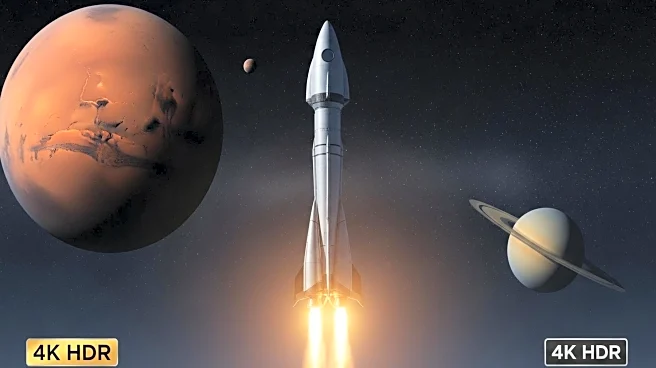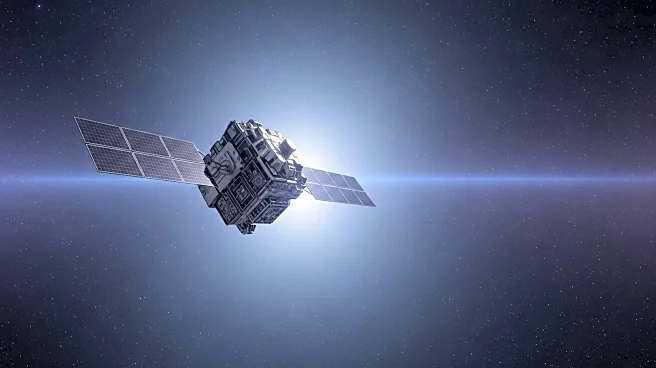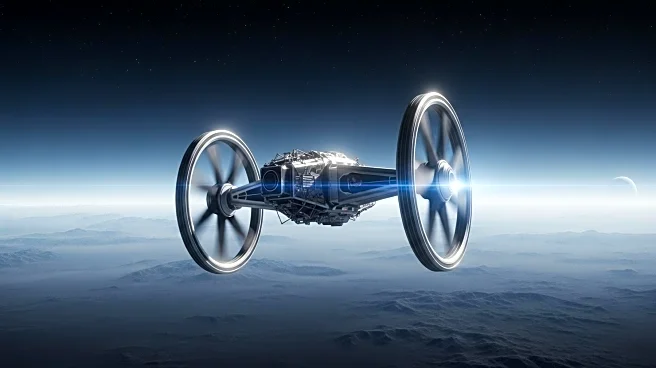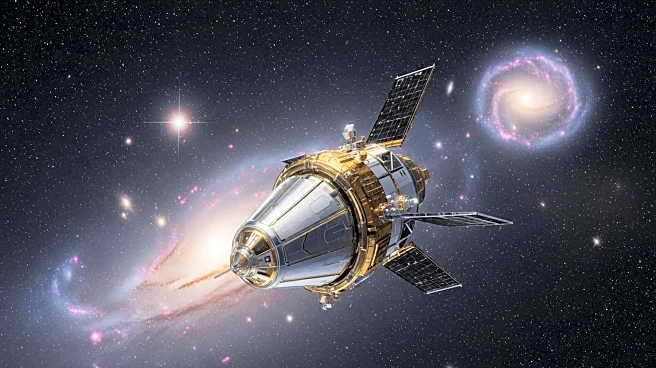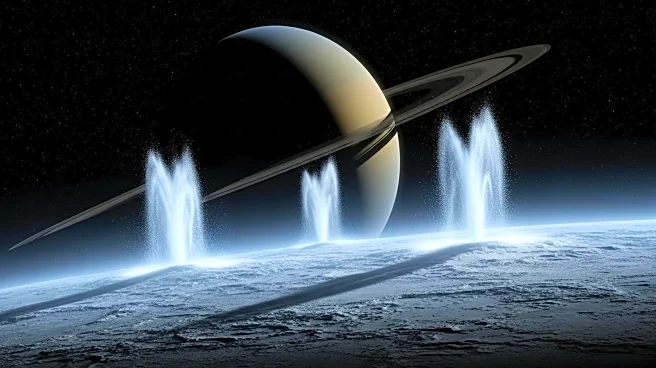What is the story about?
What's Happening?
Recent research conducted by the University of Bristol has revealed that Titan, Saturn's largest moon, has an atmosphere that behaves like a gyroscope, oscillating and changing its tilt with the seasons. This discovery was made using data from the Cassini-Huygens mission and has significant implications for NASA's upcoming Dragonfly mission. The Dragonfly mission, scheduled for the 2030s, involves a drone-like rotorcraft that will explore Titan's surface. Understanding the atmospheric conditions is crucial for the mission's success, as Titan's fast-moving winds, which are about 20 times faster than the moon's surface rotation, could affect the landing and navigation of the rotorcraft.
Why It's Important?
The discovery of Titan's atmospheric dynamics is crucial for the success of NASA's Dragonfly mission. The mission's ability to safely navigate and land on Titan's surface depends on precise calculations of the atmospheric conditions. The research provides new insights into the atmospheric physics of celestial bodies, which could influence future space exploration strategies. Additionally, the findings challenge existing models of atmospheric behavior, prompting further scientific inquiry into similar phenomena on other planets and moons. This could lead to advancements in our understanding of planetary atmospheres, including Earth's.
What's Next?
The University of Bristol's findings will aid NASA engineers in refining the Dragonfly mission's landing trajectory calculations. As the mission progresses, further analysis of Titan's atmospheric data will be necessary to ensure the rotorcraft's safe operation. The research also opens new avenues for exploration in atmospheric science, encouraging scientists to investigate similar atmospheric behaviors on other celestial bodies. This ongoing research could lead to new discoveries that enhance our understanding of planetary atmospheres and inform future space missions.
Beyond the Headlines
The peculiar behavior of Titan's atmosphere, acting like a spinning top disconnected from its surface, presents broader implications for atmospheric science. It challenges existing models and encourages exploration into similar phenomena on other planets and moons. The research highlights the continued value of data from past missions like Cassini, which can shape future exploration strategies. Titan's unique atmospheric characteristics serve as a reminder of the complexities of planetary climates and the potential for new discoveries in the field.
AI Generated Content
Do you find this article useful?


